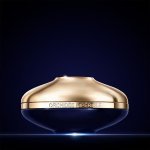Hidrahair Seal SE MB, Chemyunion’s innovative component, guarantees robust, lustrous hair without needing regular haircuts, thanks to a sealing effect that delivers instant mending of split ends, a key indicator of hair impairment.
As per Chemyunion, frayed ends represent a significant sign of hair deterioration, affecting the look and soundness of hair shafts. They emerge due to vulnerability to physical, chemical, and environmental influences — such as vigorous combing, repeated employment of thermal devices, chemical processes, and ultraviolet light — which lead to the disintegration of the hair’s outer layer, exposing the core and encouraging the development of fissures, potentially developing into trichoptilosis – the technical name for split ends.
Bioadhesive film
Chemyunion’s Hidrahair Seal SE MB is an active element that integrates a polysaccharide derived through fermentation (pullulan), a disaccharide (trehalose), an amino acid (arginine), and an organic acid (lactic acid) within a water-based system containing propanediol. As stated by the business, this ingredient blend facilitates the generation of a versatile and consistent bioadhesive layer that seals harmed ends, enhancing the texture and resilience of the hair strand.
The distinguishing characteristic of this active component is its capacity to interact chemically with the hair strand’s outer layer, guaranteeing firm adherence even on uneven surfaces. This offers a durable remedy that safeguards against further harm and reinstates a healthier and renewed visual appeal to the hair.
Long lasting effect
To assess the effectiveness of the new component in hair product recipes, bleached fibers exhibiting split ends underwent treatment using a leave-in product containing 2% Hidrahair Seal SE MB. The mending (sealing) of split ends within the hair fibers was gauged utilizing Scanning Electron Microscopy (SEM). The research encompassed capturing visual representations of the hair fiber’s surface treated with the active components to illustrate the creation of layers formed by their application onto the fibers.
The research indicated that 97% of split ends were sealed immediately following the treatment, with 83% of the restoration preserved even after 48 hours, highlighting a sustained effect.




